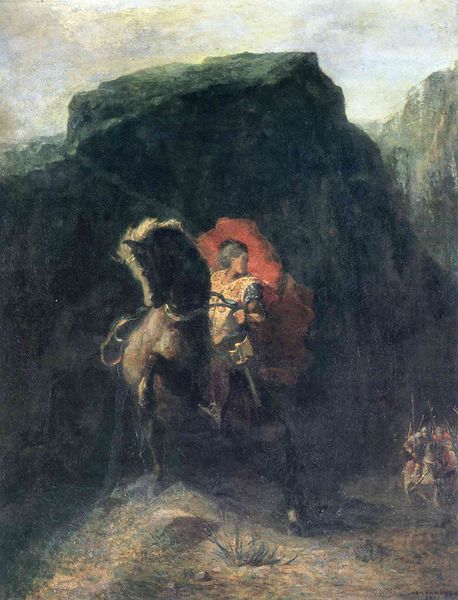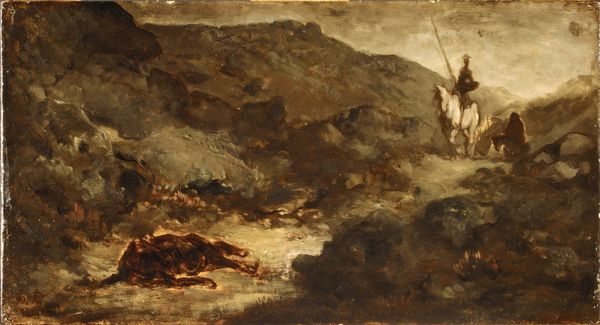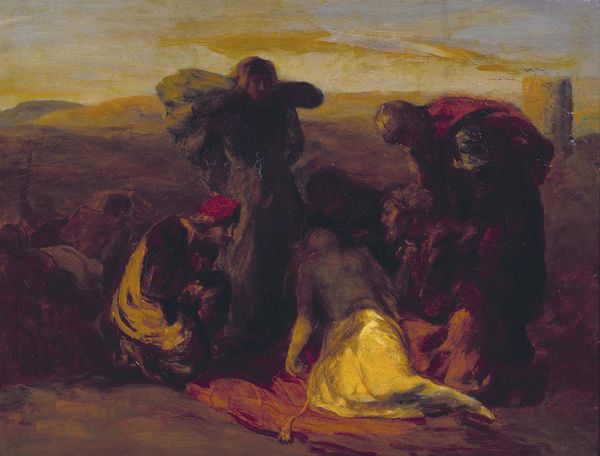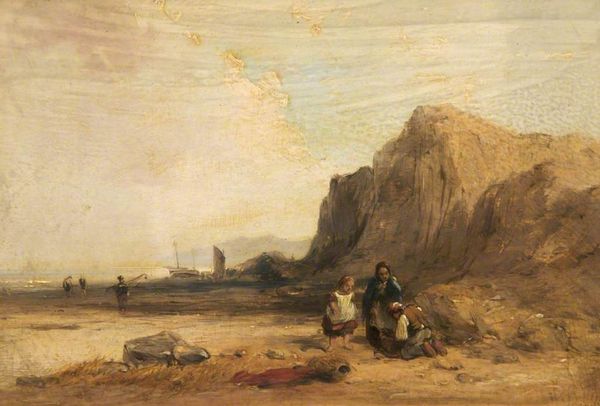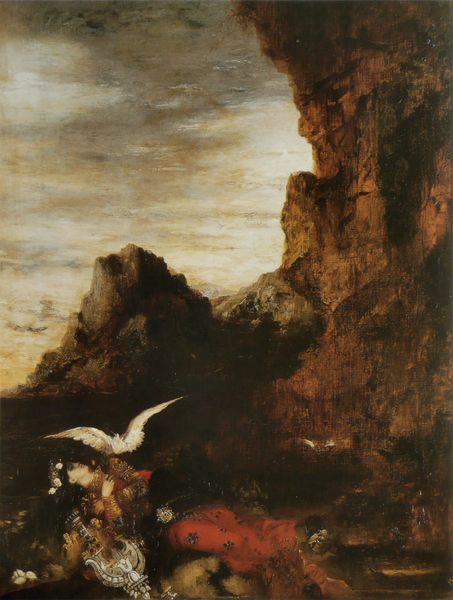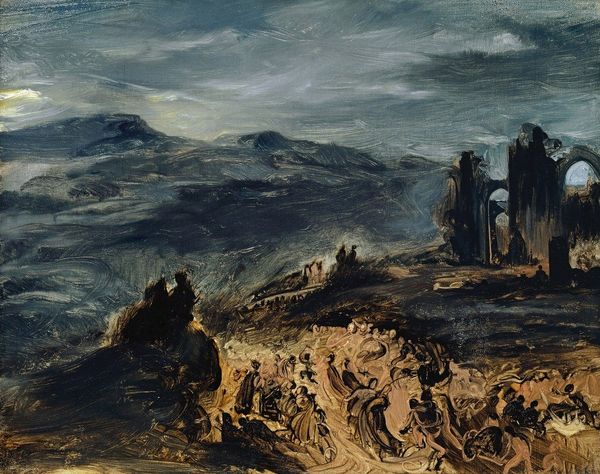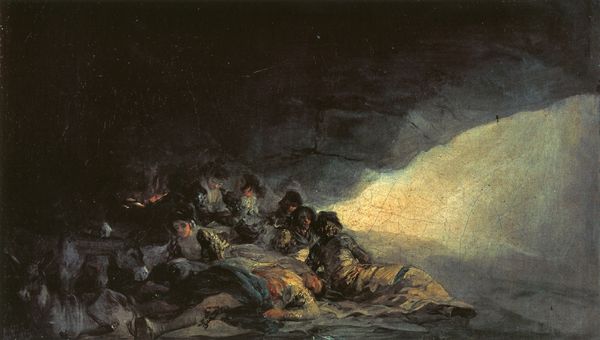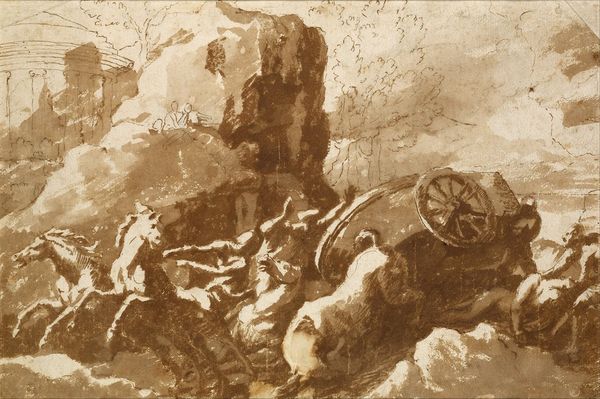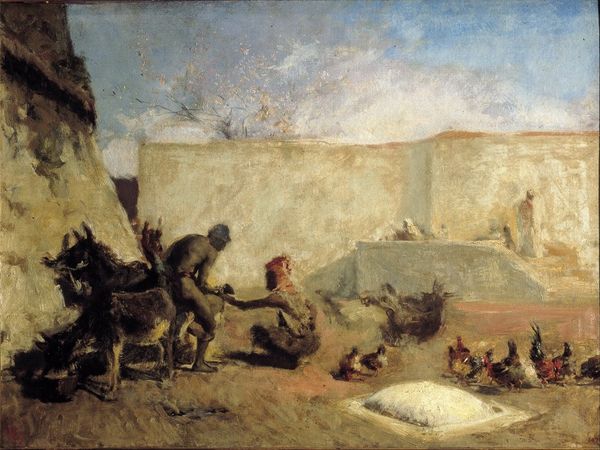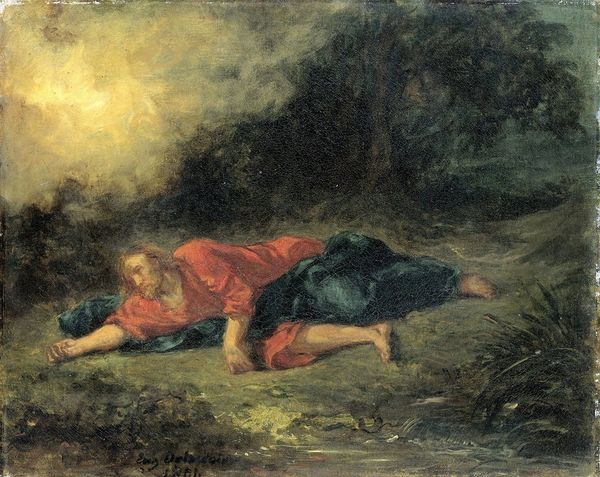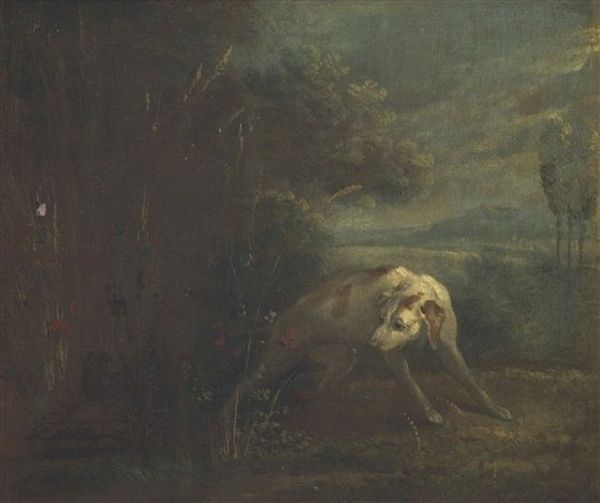
Dimensions: support: 203 x 254 mm
Copyright: CC-BY-NC-ND 4.0 DEED, Photo: Tate
Editor: This is James Bateman's "Highland Scene," a small oil on canvas. The landscape and the figures seem to blend, creating a feeling of isolation. What historical forces might have shaped Bateman's vision of the Highlands? Curator: Consider the Highland Clearances and the romanticization of the Highlands in art and literature. How might Bateman's work reflect or critique these socio-political events and their impact on the region's identity? Editor: It's fascinating how the painting captures both the beauty and the harshness of the Highlands, maybe as a commentary on those events? Curator: Exactly. The landscape is not merely a backdrop but an active participant in the narrative. It raises questions about land ownership, displacement, and cultural preservation. Editor: I hadn't considered it that way. Thank you for shedding light on the historical context embedded in the artwork.
Comments
Join the conversation
Join millions of artists and users on Artera today and experience the ultimate creative platform.
tate 8 months ago
⋮
Improvements made to the mechanisms of firearms enabled bird-shooting to become a popular sport from the late eighteenth century onwards. The somewhat lonely recreation of the sportsmen shown here, in a remote Scottish Highland landscape, is in sharp contrast to the country house shooting parties which became so fashionable in the late Victorian era.This broadly handled oil sketch does not seem to relate to any finished picture although it is typical of Bateman's output of small-scale sporting scenes. The subject-matter and technique betray the influence of Sir Edwin Landseer in whose studio Bateman worked briefly during the 1840s. Gallery label, September 2004
